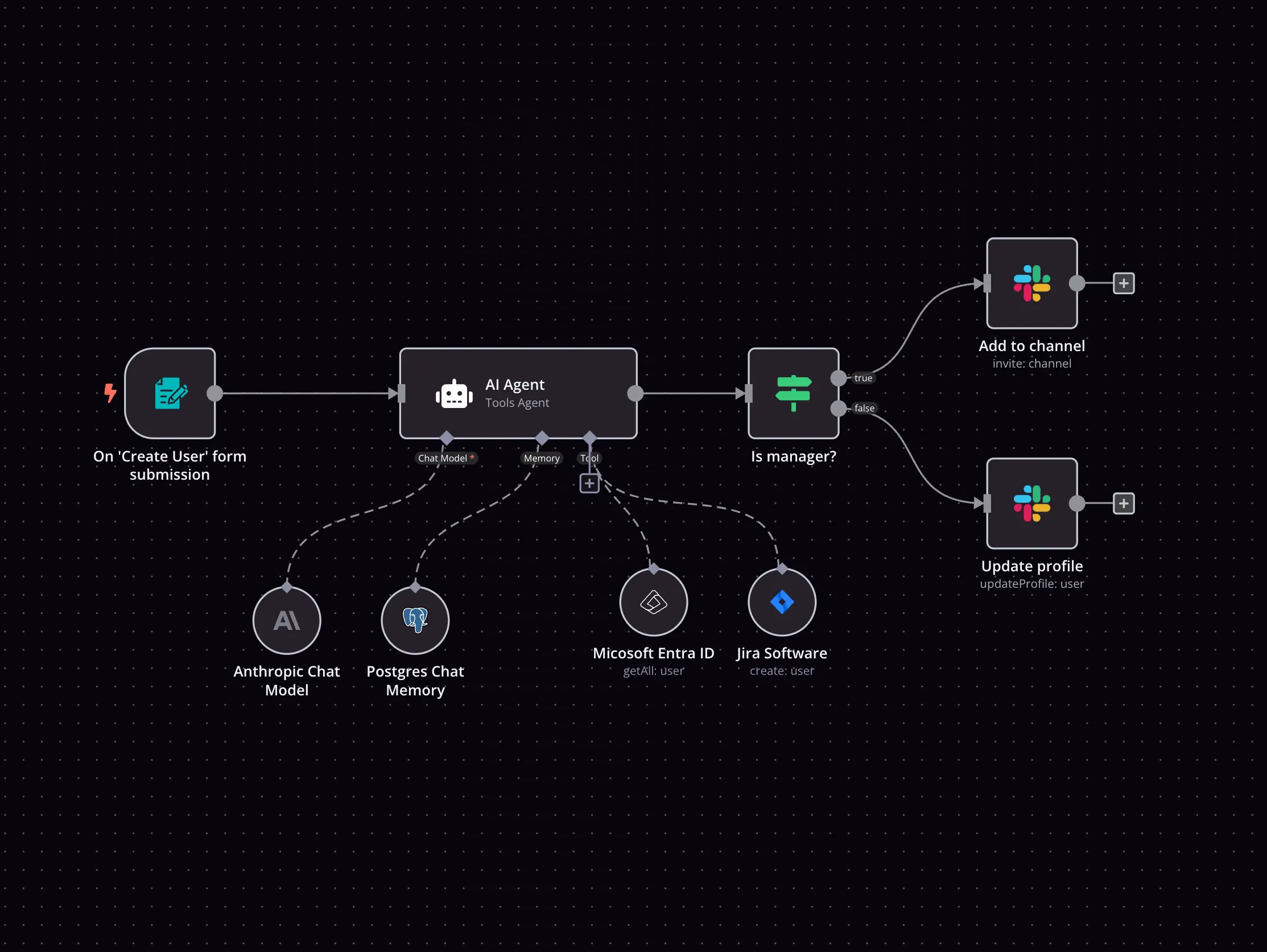HTTP Request and urlscan.io integration
How to connect HTTP Request and urlscan.io
Create a new workflow and add the first step
In n8n, click the "Add workflow" button in the Workflows tab to create a new workflow. Add the starting point – a trigger on when your workflow should run: an app event, a schedule, a webhook call, another workflow, an AI chat, or a manual trigger. Sometimes, the HTTP Request node might already serve as your starting point.
Popular ways to use the HTTP Request and urlscan.io integration
Build your own HTTP Request and urlscan.io integration
Create custom HTTP Request and urlscan.io workflows by choosing triggers and actions. Nodes come with global operations and settings, as well as app-specific parameters that can be configured. You can also use the HTTP Request node to query data from any app or service with a REST API.
urlscan.io supported actions
Get
Get Many
Perform
HTTP Request and urlscan.io integration details
HTTP Request
Related categories
FAQ
Can HTTP Request connect with urlscan.io?
Can I use HTTP Request’s API with n8n?
Can I use urlscan.io’s API with n8n?
Is n8n secure for integrating HTTP Request and urlscan.io?
How to get started with HTTP Request and urlscan.io integration in n8n.io?
Need help setting up your HTTP Request and urlscan.io integration?
Discover our latest community's recommendations and join the discussions about HTTP Request and urlscan.io integration.

Google Verification Denied
Moiz Contractor
Describe the problem/error/question Hi, I am getting a - Google hasnt verified this app error. I have Enable the API, the domain is verified on the Cloud Console, the user is added in the search console and the google do…
Open topic

HTTP request, "impersonate a user" dynamic usage error
theo
Describe the problem/error/question I a http request node, I use a Google service account API credential type. I need the “Impersonate a User” field to be dynamic, pulling data from the “email” field in the previous nod…
Open topic

Why is my code getting executed twice?
Jon
Describe the problem/error/question I have a simple workflow that retrieves an image from url with http node and prints the json/binary in code. I have a few logs, but I am confused why I see duplicate messages for each …
Open topic

How to send a single API request with one HTTP node execution, but an array of parameters in it (like emails[all]?)?
Dan Burykin
Hi! I’m still in the beginning. Now I need to make an API call via HTTP node, and send all static parameters, but with the array of emails parameter (named it wrongly just to show what I need {{ $json.email[all] }}). Wo…
Open topic

Start a Python script with external libraries - via API or Command Execution?
Tony
Hi! I have a question: I am making an app that allows a person to scrape some data via a Python library. I have a Python script that needs to be triggered after certain user actions. What is the best way to: Send a p…
Open topic
Looking to integrate HTTP Request and urlscan.io in your company?
The world's most popular workflow automation platform for technical teams including
Why use n8n to integrate HTTP Request with urlscan.io
Build complex workflows, really fast


